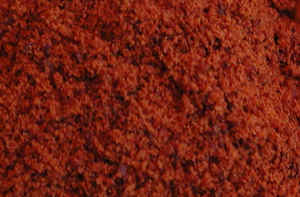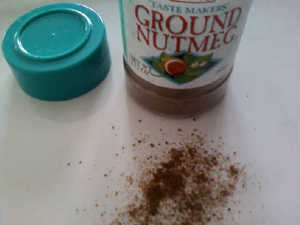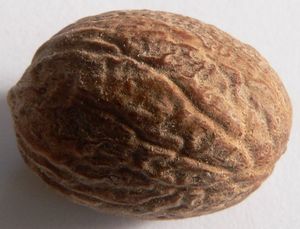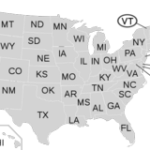Nutmeg is a commonly used spice in cooking and preparation of certain spice-mixes such as mulling spices. However, nutmeg contains an active psychoactive compound called myristicin, which belongs to the deliriant drug family. When taken in sufficient quantities, nutmeg off a spice rack can produce deliriant effects.
Why hasn’t the public heard about nutmeg being a drug? Why hasn’t there been an uproar from suburban parents demanding that the government do something about their children getting high? Well, the driving reason behind that fact that nutmeg’s drug status is largely unknown is the fact that the nutmeg high is not particularly pleasant. Like most deliriants, nutmeg’s efficacy at producing a hallucinogenic high is largely in the eye of the beholder and most people consider its effects unpleasant.
The reason nutmeg doesn’t get eggnog-drinkers high is because one must consume several grams of it in order to feel any psychoactive effects. There is a dosage threshold based on quantity, metabolism, and body weight that causes nutmeg to cease being a spice and enter the realm of being a drug. Like other deliriants, the effects of nutmeg take several hours to peak. Nutmeg is one of the most bizarre psychoactive drugs in that it often takes up to six hours for an individual to even begin feeling minimal effects of the drug. Effects can range anywhere from a mild high or stoned feeling similar to marijuana coupled with alcohol to a full-blown deliriant experience with auditory and visual hallucinations, closed-eye visuals, and shifts in perception. Because of its efficacy to produce a cheap and legal high, nutmeg is most often used by people who are unable to obtain illicit drugs or by prisoners who have access to it in kitchens.
The reason nutmeg has not seen widespread use as a drug is because of its unpleasant side-effects. The first side-effect is the horridly bitter taste of nutmeg. In cooking, only small amounts of the spice are used, but to feel its effects as a drug one must consume a significant portion of a container. The taste and texture alone can cause nausea and gagging. One of the most glaring side effects is the dry mouth that accompanies nutmeg use. This dry mouth is much stronger than that caused by cannabis use and can persist for up to two days. Other side effects during the primary experience include a proneness to panic attacks and inability to focus. Also, since myristicin is classified as a deliriant compound, a user may find him or herself in a state of mental confusion or delirium in addition to the high. Finally, one of the most nagging of side-effects of nutmeg when used as a drug is the persistence of symptoms. Depending on dosage, a user can continue to experience a feeling of airy lightness and spaceyness for up to five days after dosing. These persistent effects can take the form of a stupor with a lack of ability to focus on certain tasks or carry on conversations for very long.
So why hasn’t the government all of a sudden taken nutmeg off the shelves of supermarkets? Why aren’t kids getting high off their parents‘ kitchen spice rack? Well, simply because to most people who have tried the spice as a drug, the side-effects and unpleasant sensations outweigh the psychoactive benefits. Stick to using this brown powder as a spice, not a high.








